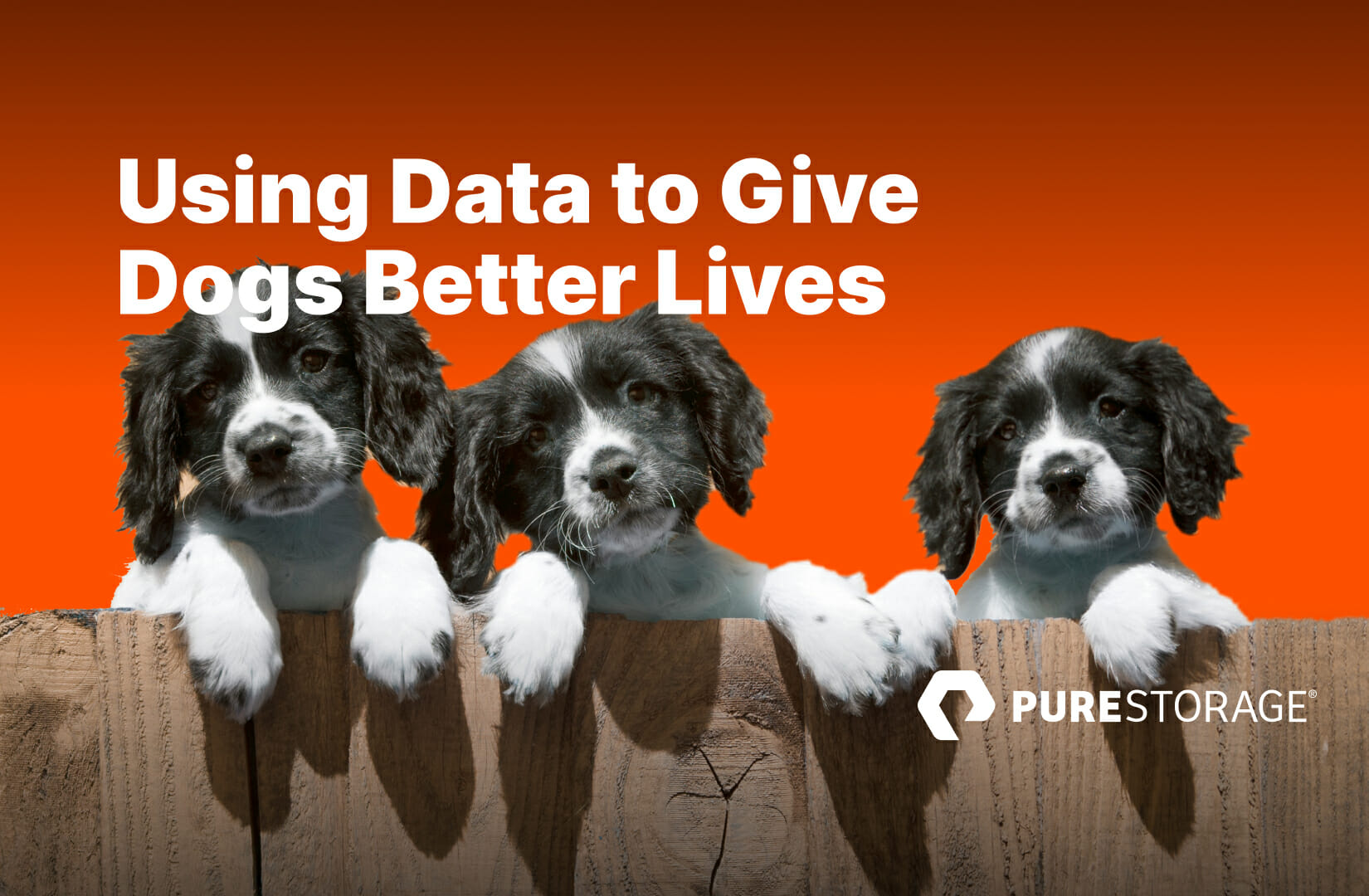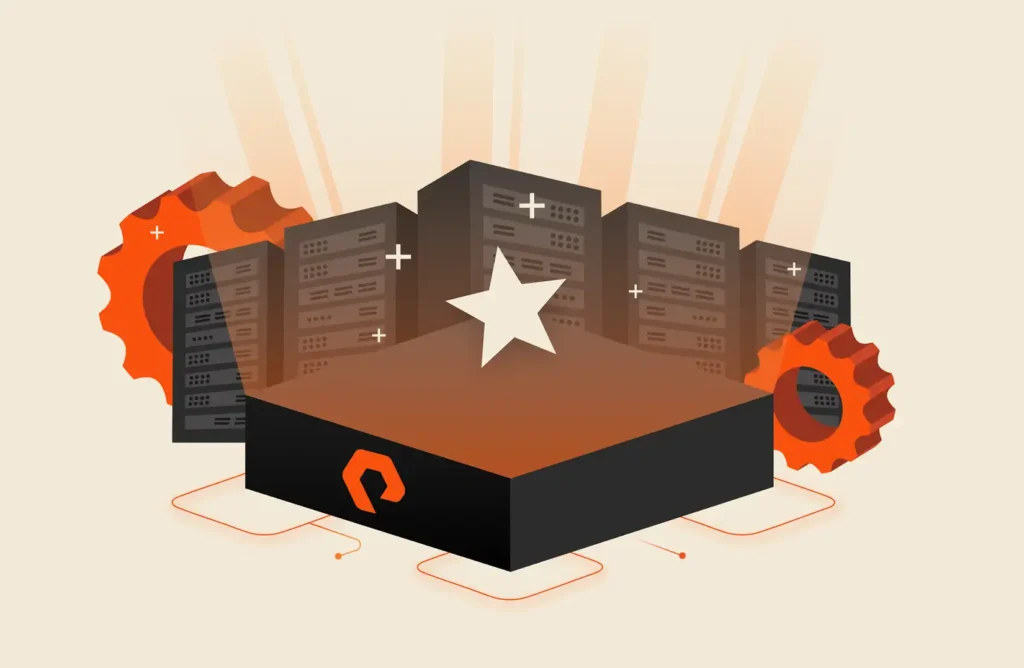We talk about unstructured data a lot. And, why not? We’re creating terabytes of it every day and it can be used for a lot of cool things.
If you love dogs, you’ll be happy to hear that a lot of brilliant people are using technology and unstructured data together to make life better for our furry friends. From streamlining vet visits to getting good boys and girls off the street, these folks are the dog whisperers we need!
Photos and DNA to Determine Breeds
Photos are some of the most common types of unstructured data. Your phone is probably filled with pics of your dog, but that used-up RAM is good for more than getting likes on Instagram.
Some services can determine a dog’s breed based on photos. Artificial intelligence analyzes attributes through the photos, using algorithms to draw out the likelihood of different breeds. For example, if your dog has a long, slender body, long legs, short hair, and a long snout, he or she may have greyhound or whippet in their genetics. If your dog has a hairless pink tail, is only active at night, and eats all of your garbage, that’s a possum, not a dog. Oops.
You can get even more precise with actual DNA. Ever pried your dog’s jaws open in a panic when they snapped up something off the sidewalk? Then you’re probably qualified to do a swab and get a detailed DNA composition of your canine’s breed and genetic makeup. This can help you determine how much exercise they should get, what food is best, what foods to avoid, health complications to know, and tips for training.
Remember, it doesn’t matter if your dog is a purebred or a mutt; they’re 100% perfect.
Photos and Videos Enable Telehealth for Pets (and Make Vet Visits Easier)
We’ve all been there; our dog hurts himself or isn’t feeling well, so we drive him all the way to the vet only to hear that the Rx is for him to take it easy for a few days. This is good news; the $500 vet bill is not.
Luckily, many vets now have online portals or platforms that allow you to send photos and videos before (or in lieu of) visits. A photo or a video of a limp or boo-boo paw can help vets determine an emergency and diagnose (or at least narrow down) the problem before you step foot in the office. In some cases, you may not need to bring them in at all, but if you do, the preliminary work is out of the way, helping to make visits quicker and easier.
Big Data for Better Health
Different types of tech have made a huge impact on dogs. You can now use a camera to watch your dog when you’re not home. You can buy a treadmill so your dog can get a workout when you can’t take them for a walk. You can even set up an automatic feeder so that you don’t have to worry about forgetting to feed your pooch.
One piece of tech that has spelled big things for dogs is fitness trackers. Much like human fitness trackers, these trackers give you insight into your dog’s health by analyzing sleep patterns, eating habits, and fitness levels. You can use this information to help create a fitness routine for your dog that will keep them happy and healthy. One company, however, is taking this data to the next level.
FitBark, a supplier of dog fitness trackers, is collecting all of this data on dogs to learn more about their breeds. They’re using this data to learn more about sleep patterns with dogs, as well as behavioral patterns.
Another company that is doing big things with doggy data is Camp Bow Wow. As of 2018, the company collected data from about 670,000 dogs. They learned a lot from this data from simple things like what names were most common for dogs to eating and fitness habits. The company has used this data to find the best diets for different breeds, as well as help fight dog obesity!
Data is so useful, even Santa Claus could make use of it!
Streaming Data Gets Dogs Adopted (and Found!)
Photos and videos are some of the most common forms of unstructured data—like those cute snaps on adoption sites and video streams like those from the Humane Society on sites like Twitch and Tiltify. They show cute pups and kittens that are up for adoption or feature volunteers sharing information about the Humane Society. If you’ve ever watched a viral video online, you’ve probably seen a heartwarming story of a stray pup getting rescued and adopted into a loving home. (One of the biggest distributors of these stray animal rescue stories is The Dodo—bring your tissues!) Social networks are big drivers of adoptions and rescues!
And then there’s the lost dog population. If you’ve adopted a dog in the last decade, they’ve probably been microchipped. These microchips contain data about you, including your name, phone number, and last known address. So if your dog is lost, the microchip can be used to reunite them with you. According to a recent study that examined more than 7,500 strays, dogs with microchips were reunited with their owners more than 50% of the time, while dogs without them were reunited about 20% of the time.
If you’ve ever lost your pet, you know the stress and anxiety that comes with it. A microchip more than doubles your chances of being reunited with your doggo, so make sure you get one for your four-legged friend.
Summary
One of the codes of the internet is that we do not deserve dogs. These cute, soft, friendly critters love us unconditionally. The least we can do is help build a better world for them. We’re hoping that these changes to doggy care made by unstructured data are only the beginning of amazing changes to come.





